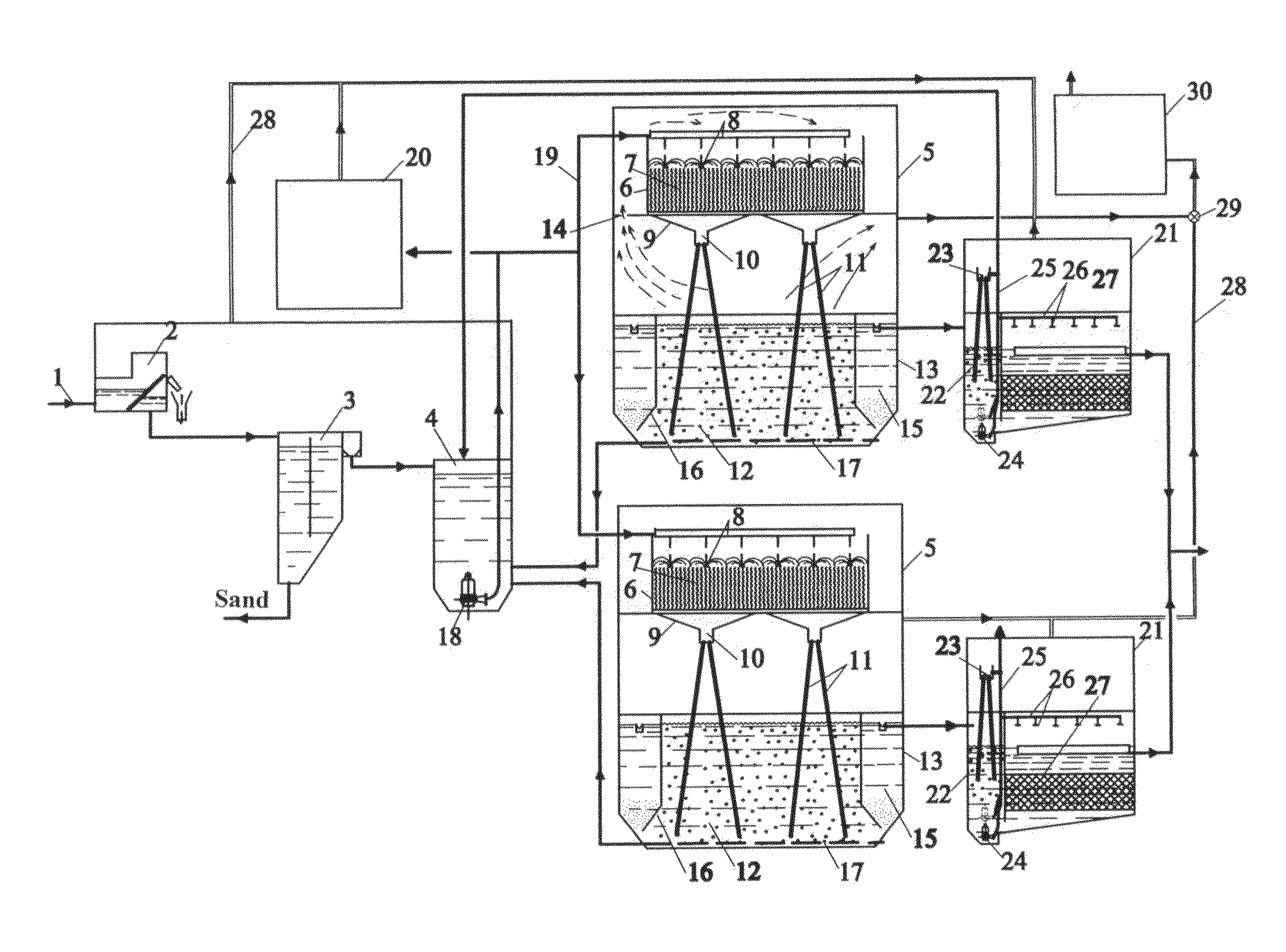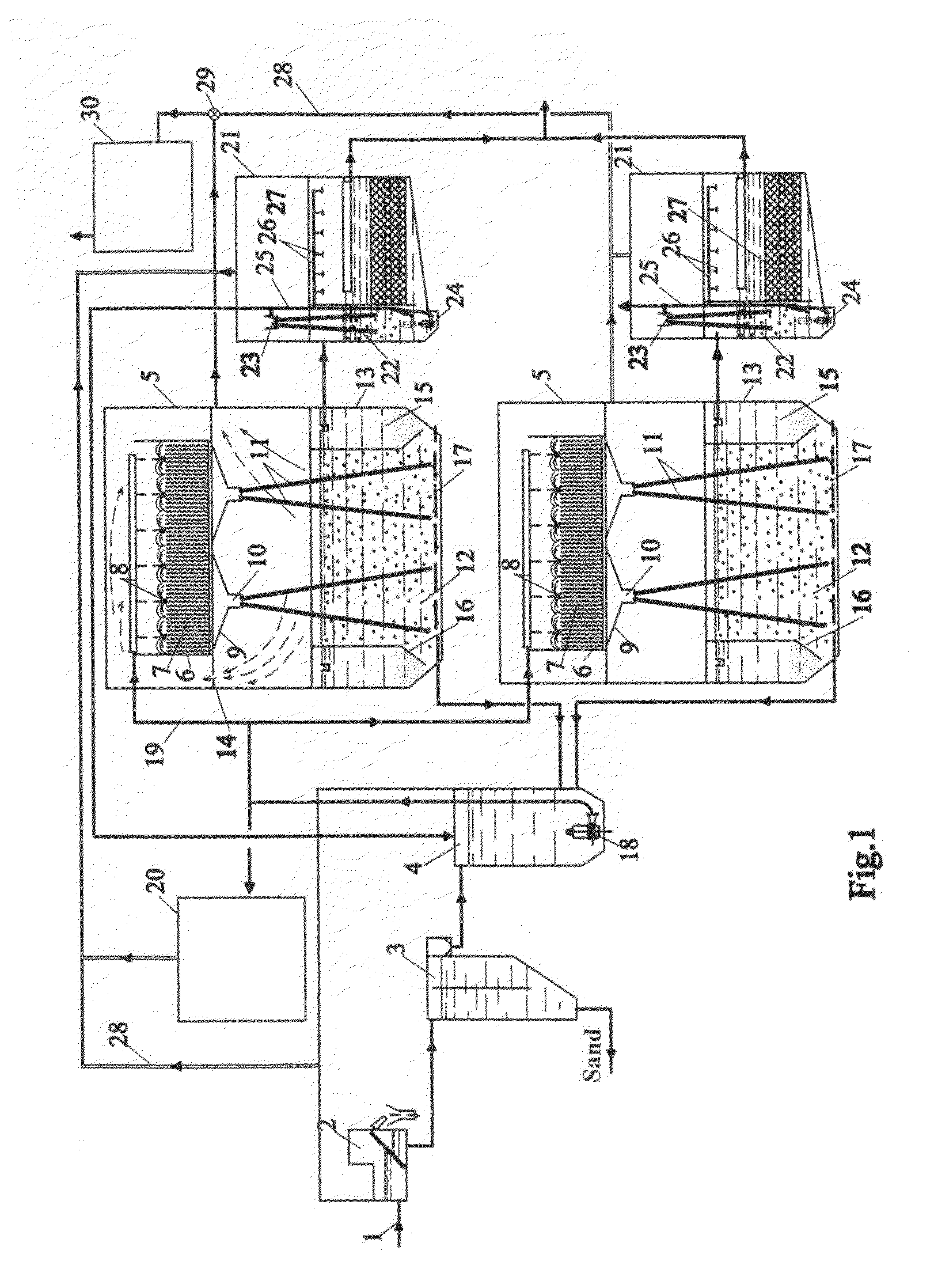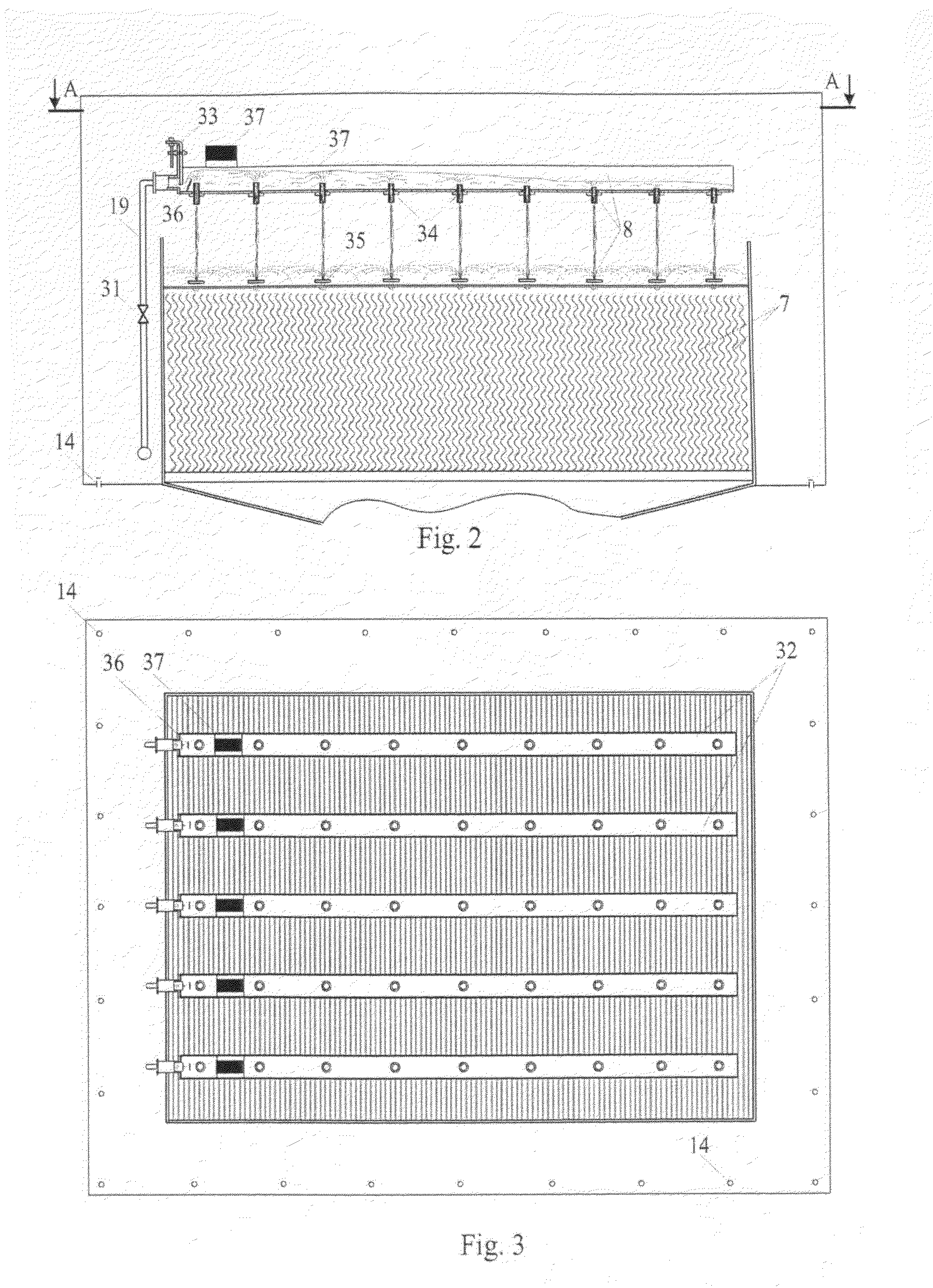Integrated sewage treatment plant
- Summary
- Abstract
- Description
- Claims
- Application Information
AI Technical Summary
Benefits of technology
Problems solved by technology
Method used
Image
Examples
Embodiment Construction
The plant for deep biochemical treatment of the sewage whose BOD reaches 1.000 mg / dm3 and suspended matters 700 mg / dm3, includes sewage feeding pipeline 1 connected to integrated mechanical treatment device 2 which is in its turn connected by a pipeline to vertical sand catcher 3. The collecting tray of vertical sand catcher 3 is connected by a drain pipeline to mixing chamber 4 combined with biological treatment devices 5. Combined biological treatment devices 5 consist of biofilters 6 with feed 7 provided with spray lines 8, collecting trays 9, and drain collectors 10. The drain collectors have aeratic columns 11 attached to them, which are sunk in aeration zones 12 of aeration tank-settlers 13. The partition separating the biofilter space from the air-tank separator space, should have valves or holes for air bypass 14. Aeration settling tanks 13 of aeration zones 12 are separated from settling zones 15 by partitions 16. The outer perimeter of the conic part of the bottom of air-t...
PUM
| Property | Measurement | Unit |
|---|---|---|
| Temperature | aaaaa | aaaaa |
| Temperature | aaaaa | aaaaa |
| Temperature | aaaaa | aaaaa |
Abstract
Description
Claims
Application Information
 Login to View More
Login to View More - R&D
- Intellectual Property
- Life Sciences
- Materials
- Tech Scout
- Unparalleled Data Quality
- Higher Quality Content
- 60% Fewer Hallucinations
Browse by: Latest US Patents, China's latest patents, Technical Efficacy Thesaurus, Application Domain, Technology Topic, Popular Technical Reports.
© 2025 PatSnap. All rights reserved.Legal|Privacy policy|Modern Slavery Act Transparency Statement|Sitemap|About US| Contact US: help@patsnap.com



